Small signs often reveal what may come later.

It usually starts with something subtle. A stiff tail, a hard stare, or that pause before a growl, all moments owners brush off as “quirks.” But researchers are warning that certain behaviors, if ignored, can predict when a dog may eventually act out, especially toward kids.
Children move fast, grab without warning, and operate in a frequency of sound that stresses dogs. When those early warning signs are missed, tension builds quietly. What experts have found is that aggression rarely comes out of nowhere. The clues are written in the body language long before the bite.
1. Prolonged staring before reacting is a serious red flag.
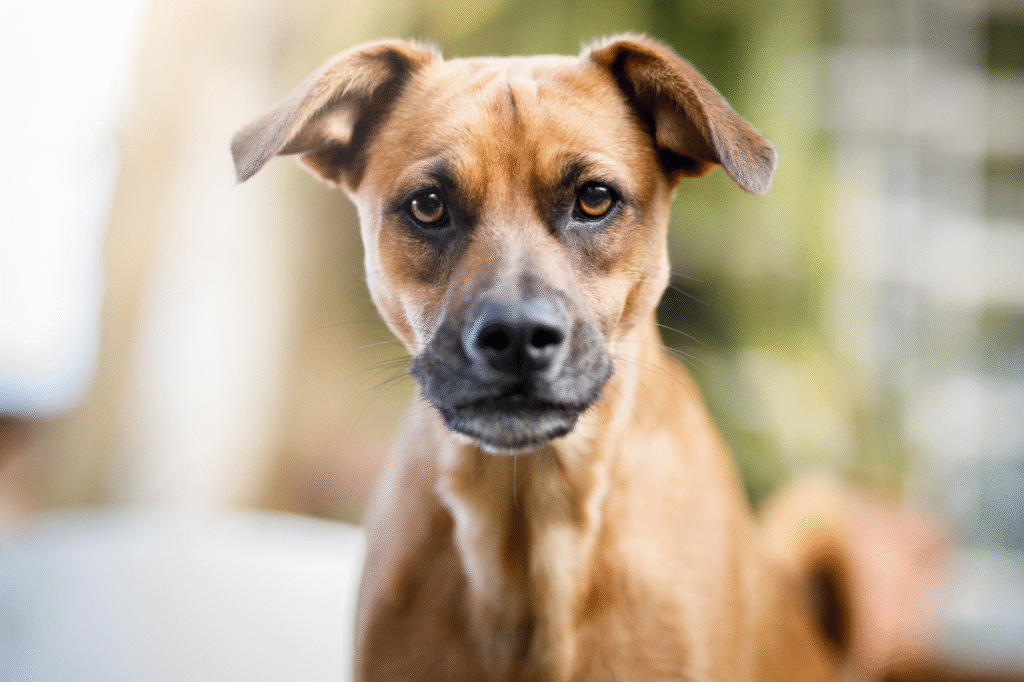
When a dog locks its eyes on a person, especially a child, and holds that gaze without blinking, it’s rarely affection. According to a behavioral review by the American Veterinary Medical Association, sustained staring is often a precursor to defensive or offensive aggression. It signals focus and tension rather than curiosity.
Children often mistake this for engagement and move closer, not realizing the dog’s boundaries are collapsing. The moment is fragile, and many bites occur during this silent exchange. A soft gaze shows comfort, an unbroken stare means conflict is near. Recognizing it early can prevent confrontations before they start.
2. Stiffening of the body during play signals restraint turning to fear.
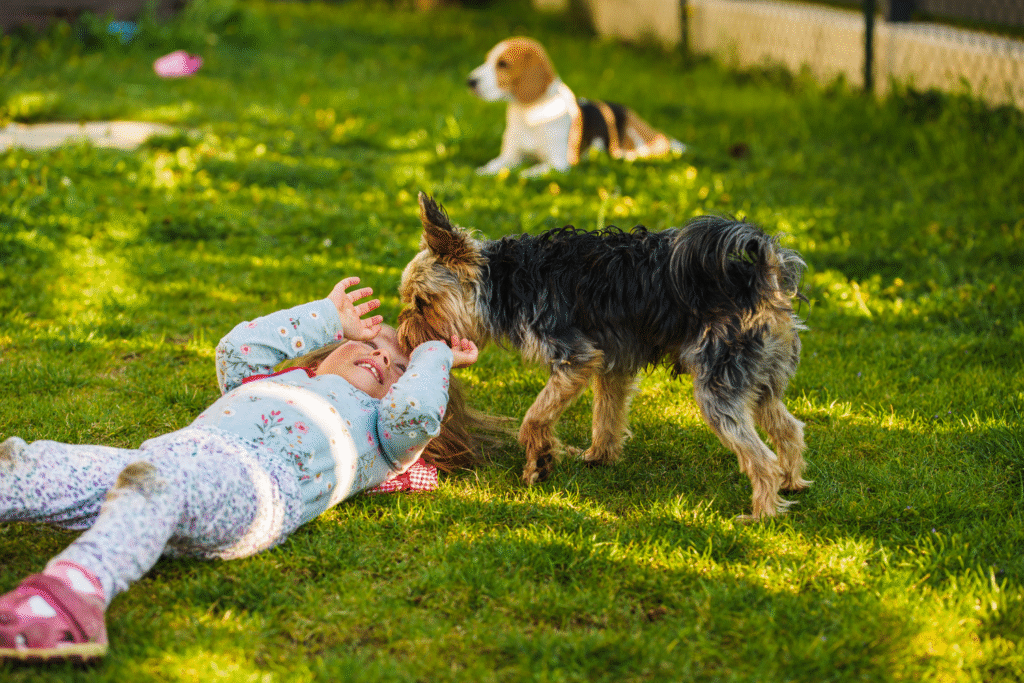
What starts as play can shift quickly. A wagging tail stops mid-air, muscles tighten, and breathing halts. This rigid posture is the dog’s way of saying enough. Many owners misinterpret it as focus, when it’s actually the body preparing for self-defense. The Journal of Applied Animal Behaviour Science linked this freeze response to fear-based aggression, especially around unpredictable movements from children.
Once this behavior becomes a pattern, the risk increases. Children move in sudden bursts, sprinting, shouting, grabbing toys, and that unpredictability pushes the dog’s stress to the limit. Dogs that stiffen frequently are communicating discomfort, and every ignored signal brings them closer to reacting.
3. Resource guarding can quickly evolve into defensive aggression.
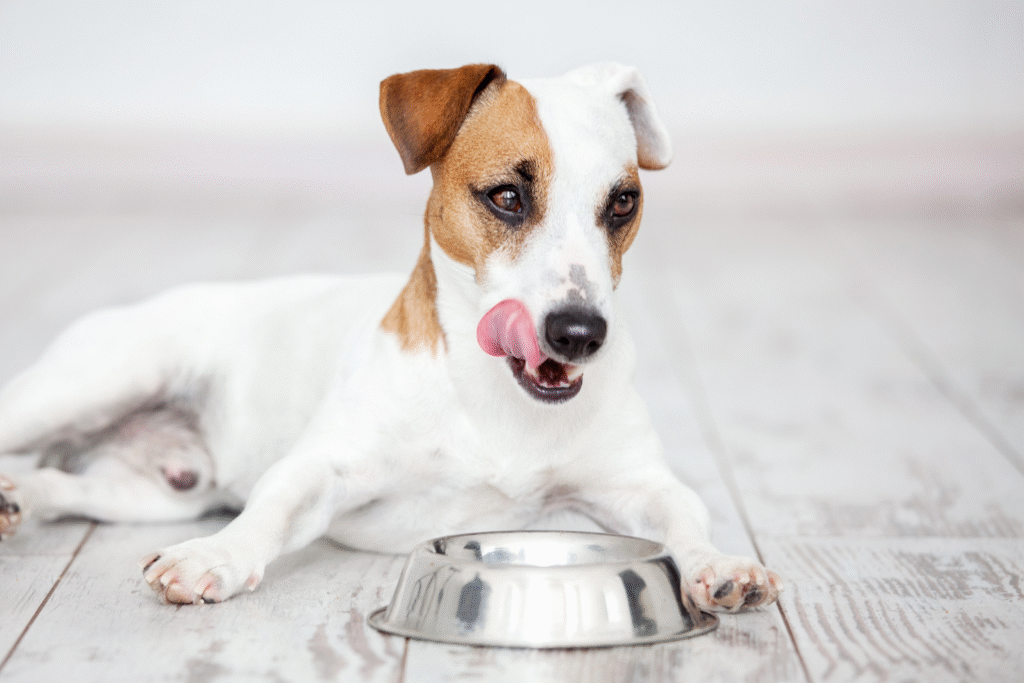
As stated by the ASPCA, resource guarding, growling or snapping when protecting food, toys, or space, is among the top predictors of aggression toward household members. It often starts small, like a low growl near the food bowl or a body block on the couch, but escalates when left unchecked.
Children are usually unaware of these boundaries and reach anyway. To a dog that’s already possessive, that hand feels like a threat. Early intervention through desensitization training can help rebuild trust. Ignoring guarding behaviors is like ignoring smoke, the danger intensifies the longer it goes unaddressed.
4. A low, steady growl used as warning, not fear.

Some dogs growl from fear, others from control. The difference matters. A steady, low growl held too long signals intention rather than panic. It’s the dog’s way of claiming authority over space or people. Many families silence this instinct through punishment, which only removes the warning system that keeps bites from happening.
Once a dog learns to suppress growls, it skips straight to snapping. The goal should never be to erase vocal warnings but to understand why they happen. A growl is communication, not rebellion, and when that message goes ignored, the next step is usually physical contact.
5. Tail carriage that stays high and still during tension.

Dogs communicate volumes through their tails. A loose wag shows ease, but a raised, motionless tail during a tense moment shows challenge or unease. That tail position tells you more than any bark could. Children often don’t notice these cues and keep approaching, misreading stillness as friendliness.
High, rigid tails are like loaded springs. Once pressure builds, the reaction is fast and sharp. Learning to recognize this visual cue gives families an early alert system. A simple pause, a redirected toy, or allowing space to cool down can stop a potential incident before it unfolds.
6. Ignoring recall commands even in calm environments.
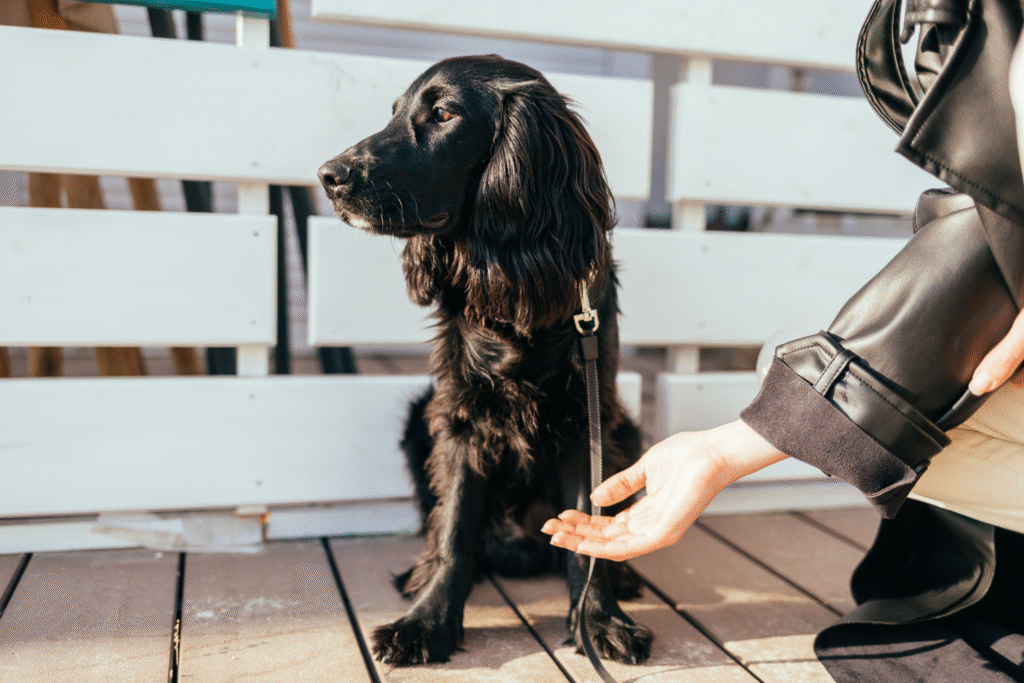
A dog that suddenly refuses recall, especially around children, is communicating distrust or overstimulation. That disobedience isn’t always rebellion, it can signal an emotional overload. When dogs lose focus, they’re not ignoring owners, they’re disconnecting from a situation that feels unsafe or unpredictable.
Children chasing or calling their names only heighten the stress. Dogs need predictability, and when that vanishes, they default to avoidance or resistance. Owners who treat disobedience as defiance often miss the fear component. Rebuilding confidence with quiet distance and positive reinforcement can restore trust before frustration turns into aggression.
7. Sudden avoidance of touch from familiar people.

When a dog begins dodging pets or leaning away from hands it once welcomed, it’s not being moody, it’s signaling discomfort. That change often appears before more overt warnings like growling. Kids tend to ignore this and persist, leading to the very reaction parents fear most.
Physical withdrawal is emotional communication. The dog is saying “I don’t trust this right now.” It’s crucial to respect that distance. Pushing for affection too soon can turn anxiety into aggression, especially in homes where boundaries blur between affection and overwhelm. Respect gives space for calm to return.
8. Excessive yawning or lip licking during noise or chaos.

Dogs self-soothe through subtle gestures. A yawn outside of sleepiness or rapid lip licking during family commotion is not boredom, it’s anxiety. These calming signals are how dogs defuse tension before it explodes. When ignored, they lose effectiveness and the animal may resort to stronger displays.
Parents who spot these micro-expressions early can de-escalate by offering calm spaces or short breaks. It’s a moment-to-moment awareness that prevents future conflict. The quieter the signal, the louder the message behind it. Dogs speak softly at first, but silence ignored always turns into action.
9. Snapping at the air instead of direct contact.

When dogs snap without biting, it’s an attempt to stop something before it happens. It’s a defensive action that says back off. This behavior often surfaces when earlier cues, growling, retreating, stiffening, were dismissed. Each air snap is a desperate boundary marker predicting what will happen next if nothing changes.
Children are rarely fast enough to interpret the warning. They see it as random aggression, when it’s really stress responses stacking up. Intervention here is critical. Training that resets boundaries and rebuilds trust can turn that reaction back into communication before real harm occurs.
10. Guarding a specific person, often one adult in the home.

Attachment can cross into possessiveness when dogs begin guarding a favorite person. They may position themselves between the adult and child, block interactions, or growl if the child gets too close. This is loyalty twisting into control, and it destabilizes household harmony.
Dogs need clear structure, not ownership. Balancing affection through shared walks, play, and feeding shifts loyalty back to the family as a whole. A dog that guards one person is reacting to perceived scarcity, and scarcity always breeds tension. Rebalancing roles early prevents the behavior from evolving into open aggression.
11. Play that turns rough the moment energy spikes.
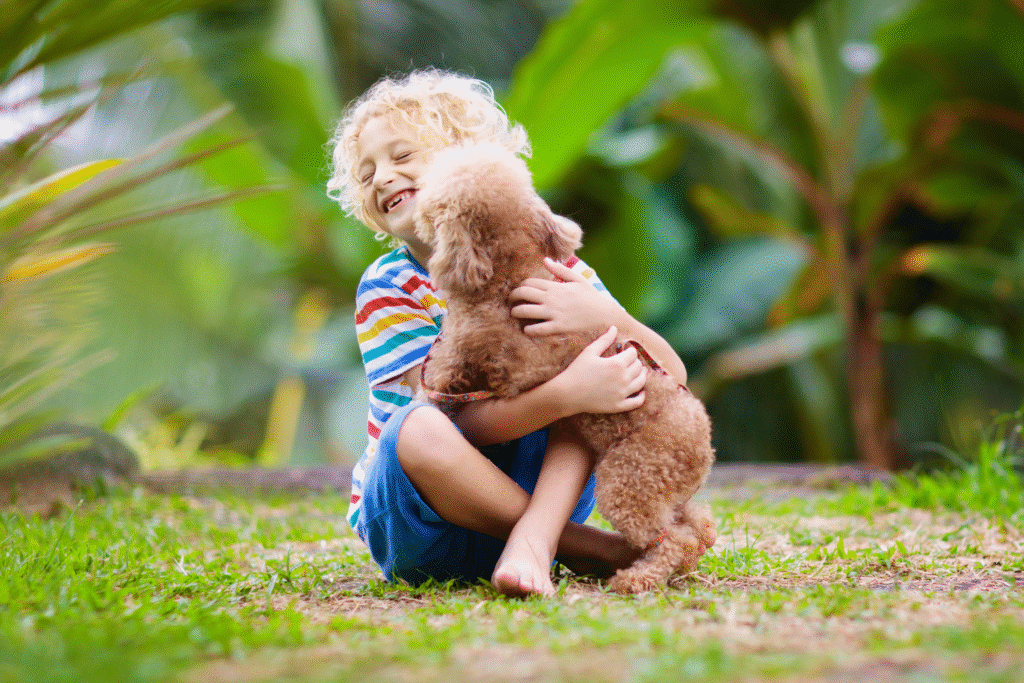
Play aggression is often mistaken for excitement. But when a dog starts nipping, lunging, or growling deeply during play, that’s not joy, it’s overstimulation. Children, being unpredictable, are especially at risk during these sudden shifts in tone.
Interrupting play before it escalates teaches dogs self-regulation. It’s not about punishment, but pacing. Dogs who can’t turn off intensity often struggle to manage frustration later. Playtime should end on calm energy, not chaos, to reinforce stability and reduce risk. Predictable endings make dogs feel safe, and safety curbs aggression.
12. Freezing during a hug or close contact.
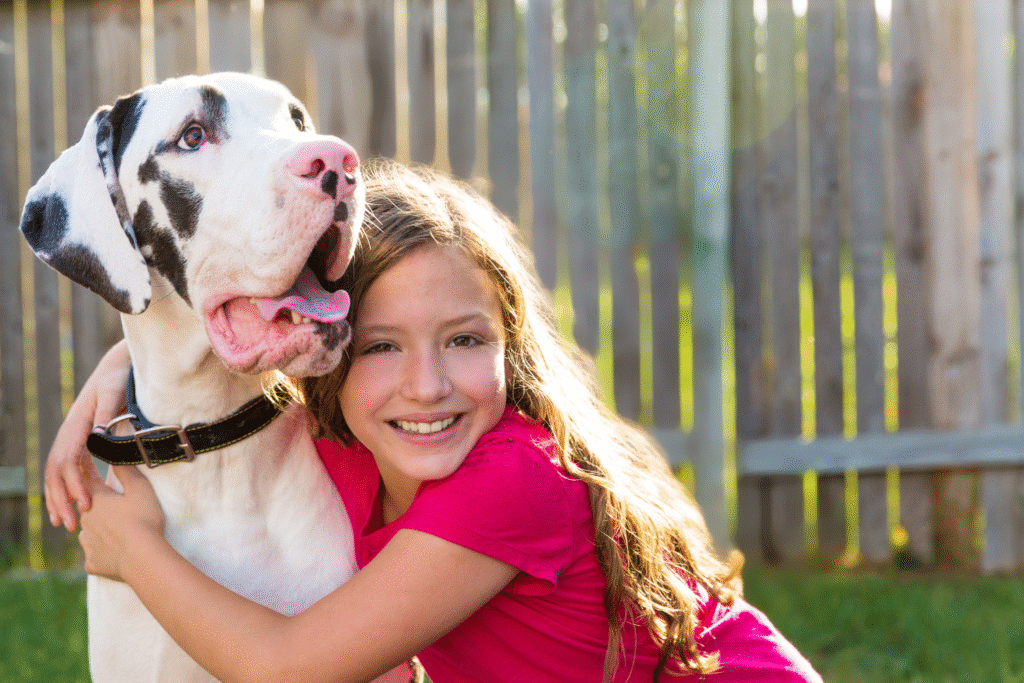
Children love hugs. Dogs often do not. When a dog freezes stiff during an embrace, the body is screaming discomfort. Most bites to children happen in these intimate, seemingly loving moments. That immobility isn’t calm, it’s fear locked inside restraint.
Teaching kids to read that stillness is life-saving. Respecting space, replacing hugs with gentle scratches, and letting the dog approach first changes the entire interaction. A frozen dog is a living warning sign. When families learn to see that silence as communication, safety replaces risk, and trust has a chance to grow.
